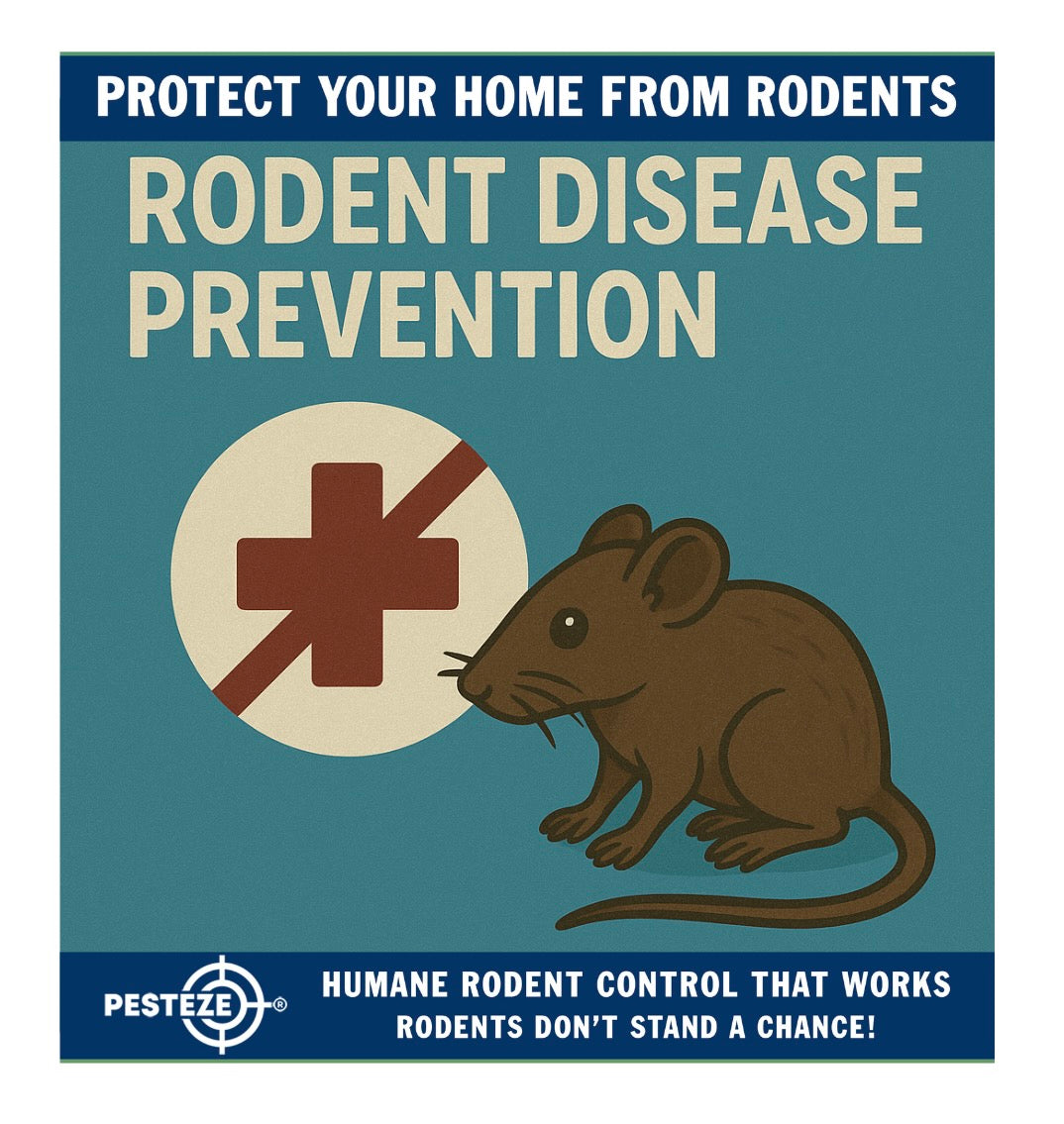RODENT DISEASE PREVENTION

RODENT DISEASE PREVENTION
SUMMARY
Rodents aren't just a nuisance—they can carry dangerous diseases that pose serious risks to humans and pets. By understanding how these diseases spread and implementing effective prevention strategies, you can keep your home or business safe and healthy.
FEATURES
-
Disease Carriers: Rodents can spread over 35 diseases, including hantavirus and leptospirosis.
-
Contaminated Surfaces: Urine, droppings, and saliva can infect surfaces and food.
-
Airborne Risks: Disease particles can become airborne when droppings are disturbed.
-
Pet Exposure: Pets can catch illnesses through rodent contact or contaminated items.
-
Bite Transmission: Though rare, rodent bites can directly transmit infections.
-
Ongoing Threat: Rodents breed rapidly, increasing disease risk if left unchecked.
DESCRIPTION
Rodents are known carriers of numerous harmful diseases that can impact both humans and animals. Some of the most common illnesses linked to rodents include hantavirus, salmonella, leptospirosis, rat-bite fever, and lymphocytic choriomeningitis virus (LCMV). These diseases can spread through direct contact with rodent waste or indirectly through contaminated food, water, or surfaces.
One of the most dangerous aspects of rodent infestations is their urine, feces, and saliva. These bodily fluids can contaminate food storage areas, kitchen counters, and other commonly touched surfaces. If not cleaned properly, bacteria and viruses can linger, making it easy to contract an illness during normal household activities.
Even airborne transmission is a concern. When rodent droppings are disturbed—by sweeping, vacuuming, or simply moving objects—they can release particles into the air that are harmful when inhaled. This is particularly dangerous in enclosed spaces like attics, crawlspaces, or storage rooms.
Pets are also at risk. Cats and dogs may chase, catch, or eat infected rodents, potentially exposing themselves to parasites or diseases. In some cases, they can bring bacteria back into the home on their fur, inadvertently exposing humans.
Although rodent bites are uncommon, they are another potential transmission route. Children and pets are especially vulnerable, as they may try to interact with or handle a rodent without understanding the risk.
Given that rodents breed quickly, a small issue can become a serious infestation in a short amount of time. The more rodents present, the higher the chance of disease exposure.
To prevent rodent-borne illnesses, seal all entry points, maintain clean and dry environments, and store food in sealed containers. Regular inspections, professional pest control, and proper sanitation are key to staying ahead of rodent threats and protecting your household’s health.
- Nikita Gulrajani


Comments 0